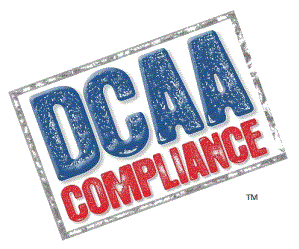September 25, 2012
DCAA recently published a new audit program on assessing consultants costs for contractors. It is Activity Code 10160 “Consulting Services” (June 2012) and can be found on their website www.dcaa.mil.
Tone is a critical aspect to the contractor’s relationship with the DCAA. Over the last few years as the number of DCAA ‘consultants’ have proliferated, I continue to notice an increasingly negative, even vicious approach and attitude towards to the DCAA. Every single slip DCAA makes seems to be a feast for those wishing to tear the agency apart.
Do not get the wrong impression, I can provide you the names of several DCAA auditors who believe I hate them and their work. These are the ones with whom I had limited contact and lost the chance to complete the ‘tone’ setting process.
The tone I strive for is professional, respectful, and advocacy for my client. I look for similar expectations from the DCAA auditors I work with.
Yet, part of the tone is environmental and set by the background we work with. Both DCAA and I must work against the subtle set ups in the background that can lead to unnecessary conflict.
The new audit program is an excellent example of the background noise that can cause problems with an audit. The following section presents some problems and is actually preceded by the section about assessing the contractor for the risk of fraud:
C-1
1. Obtain vendor listing and 1099-Misc. (block 7) forms and review for possibleconsultants not included on the listing provided by the contractor. The ACO may, asa result of inquiries received, be aware of other consultants. Also, the contractor’sprocedures may provide for the maintenance of files which contain documents -consultant agreements, conflict of interest forms, or biographies, etc. – which will serve toidentify the universe of consultants separately. Make certain you request such files fromthe contractor. Document any contractor representation that such files do not exist orthat the contractor is unwilling to permit us access.
So, let us talk about contractor fraud (background noise) and then compare the list of consultants provided by the contractor list to the 1099 Forms.
See the problem? Look at the IRS instructions for the 1099-Misc.:
Exceptions. Some payments do not have to be reported on
Form 1099-MISC, although they may be taxable to the recipient. Payments for which a Form 1099-MISC is not required include all of the following.
- Generally, payments to a corporation. But see Reportable
payments to corporations, later.
And later
Reportable payments to corporations. The following
payments made to corporations generally must be reported on
Form 1099-MISC.
- Medical and health care payments reported in box 6.
- Fish purchases for cash reported in box 7.
- Attorneys’ fees reported in box 7.
- Gross proceeds paid to an attorney reported in box 14.
- Substitute payments in lieu of dividends or tax-exempt
interest reported in box 8.
- Payments by a federal executive agency for services (vendors) reported in box 7.
Are we there yet?
Given that many consultants are not issued a 1099-Misc. (most corporations), checking a list of 1099 Misc. vendors against a list of consultants provided by the contractors has limitations as the two lists probably will not match.
The audit step’s limitations are fairly severe and are not addressed in the audit program. The purpose of the audit step seems to be the identification of the universe of consultants, claimed and otherwise. It appears to me this is best accomplished by reviewing the trail balance and general ledger detail. And I am guessing this is where the contractor is going get the list they initially provide. The documentation the contractor provides as outlined in this step is collateral at best.
We start by discussing fraud and then move on to a mess of collateral evidence without definitive results. What is the final ‘tone’ of the audit procedures at this point? Yet, the auditor is not really at fault, the background noise is determined by the program they are required to follow.
The auditor and the contractor need to rise above the limitations and set the tone for an realistic actual audit of consultant work to insure compliance with the requirements outlined within FAR, specifically 31.205-33 “Professional and consultant service costs”
Next we will look at some additional landmines in the policy and some of the legitimate ways to minimum issues in the contractor’s management of consultants.
